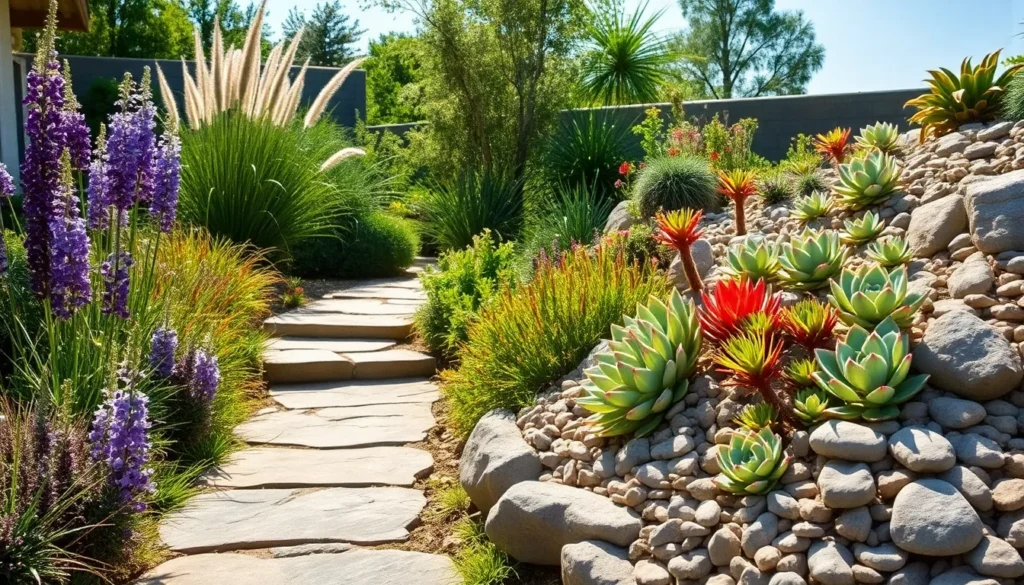Imagine stepping into a garden that thrives effortlessly, where every plant plays its part in a symphony of color and texture, and maintenance feels more like a gentle melody than a never-ending chore. Whether you’re just starting your gardening journey or have years of soil under your nails, “Low Maintenance Landscaping Ideas” is your ticket to creating a beautiful, sustainable garden with ease. This guide isn’t just a list of plants; it’s a curated collection of resilient performers that promise both beauty and practicality, saving you time and effort while maximizing your garden’s allure.
Embracing low maintenance gardening doesn’t mean sacrificing the joy and rewards of nurturing a vibrant outdoor space. With these carefully chosen plants and techniques, you’ll cultivate a garden that not only survives but thrives, bringing you endless satisfaction and peace of mind. You’ll gain practical insights into creating a landscape that suits your lifestyle, allowing you to enjoy the rewards of your labor without the constant upkeep. So, gear up to transform your garden into a haven of tranquility and beauty, confident that success is just a few tips and tricks away!
Choose Drought-Tolerant Plants
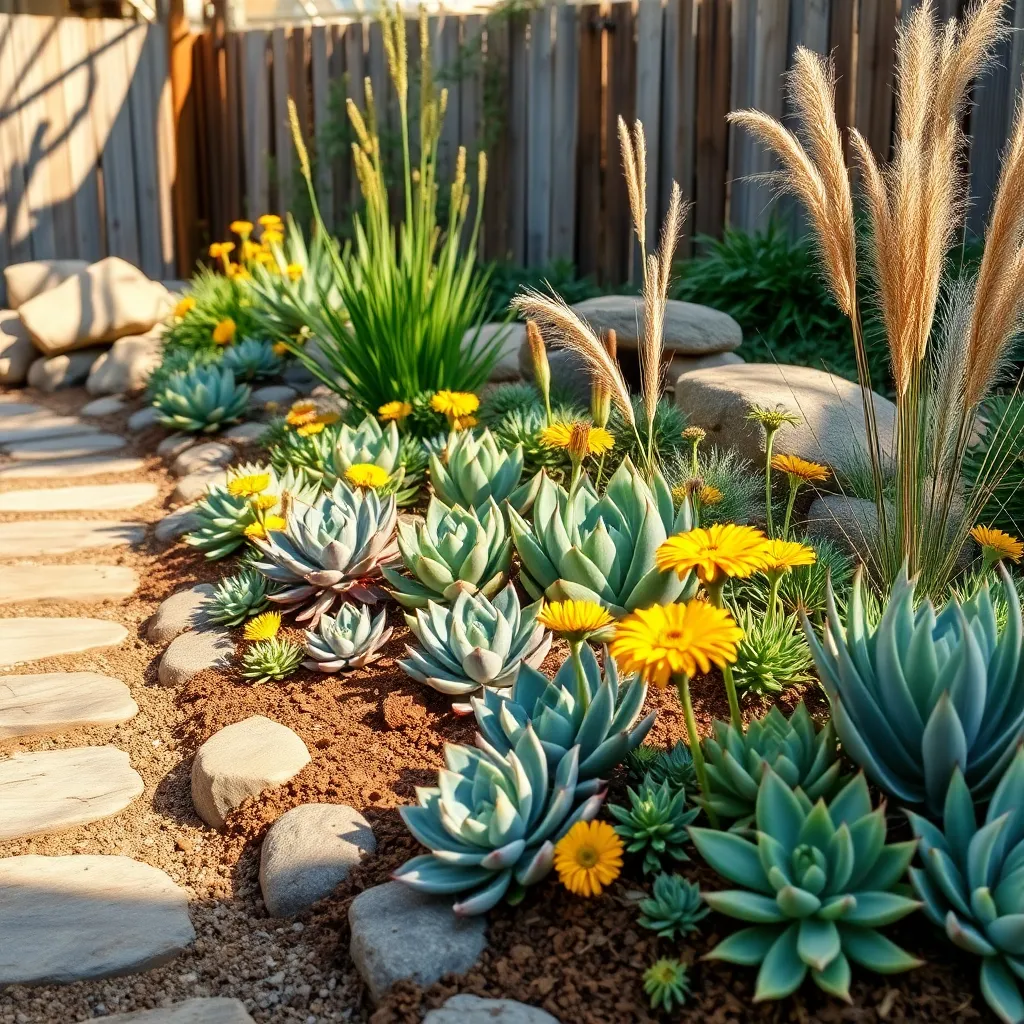
Incorporating drought-tolerant plants into your landscape is a smart way to reduce maintenance while conserving water. These plants are adapted to survive with minimal irrigation, making them ideal for areas prone to dry spells.
Start by choosing plants that naturally thrive in your region to ensure success. Native species often require less care and are more resistant to local pests and diseases, providing a sustainable option for your garden.
Consider well-known drought-tolerant options such as lavender, succulents, and ornamental grasses. These plants not only save water but also offer diverse textures and colors, adding visual interest to your landscape.
When planting drought-tolerant species, ensure they are in well-draining soil to prevent root rot. Incorporate organic matter like compost to improve soil structure and retain just enough moisture without waterlogging.
Water your drought-tolerant plants deeply but infrequently to encourage deep root growth. This technique helps plants access moisture stored deeper in the soil, increasing their resilience during prolonged dry periods.
For more experienced gardeners, consider using xeriscaping techniques to create an efficient water-use garden. Group plants with similar water needs together and use mulch to reduce evaporation, ensuring your landscape remains lush with minimal effort.
Install Automatic Irrigation Systems
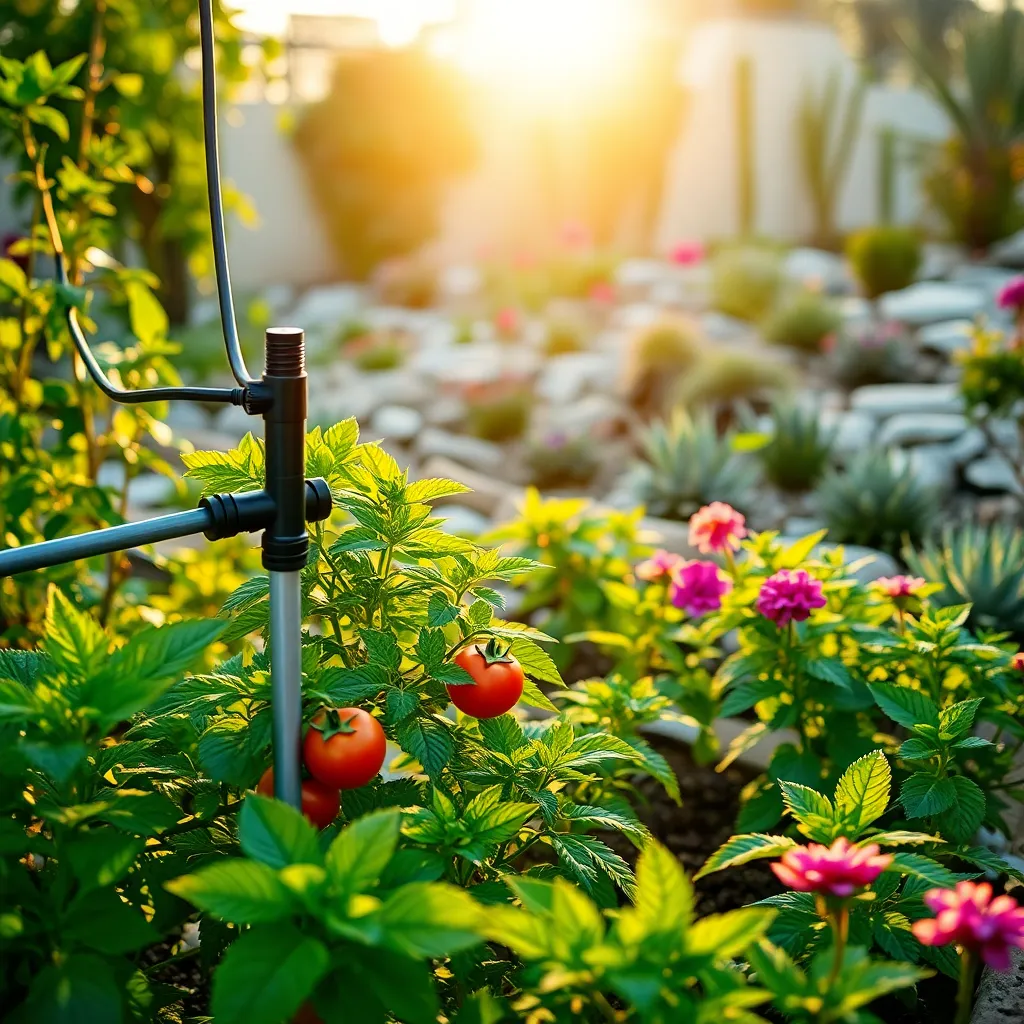
Installing an automatic irrigation system can significantly reduce your garden’s maintenance needs. These systems ensure your plants receive the right amount of water without the hassle of manual watering.
Consider using a drip irrigation system for targeted watering, which delivers water directly to the plant roots. This method minimizes water waste and is ideal for both small gardens and expansive landscapes.
When setting up your system, it’s crucial to adjust the watering schedule based on seasonal changes. During hotter months, plants may require more frequent watering, whereas in cooler seasons, you can scale back.
Advanced gardeners may opt for a smart irrigation controller that adjusts watering schedules automatically based on weather forecasts. These devices can be a game-changer, saving both water and money while keeping your plants healthy.
Opt for Perennial Groundcovers
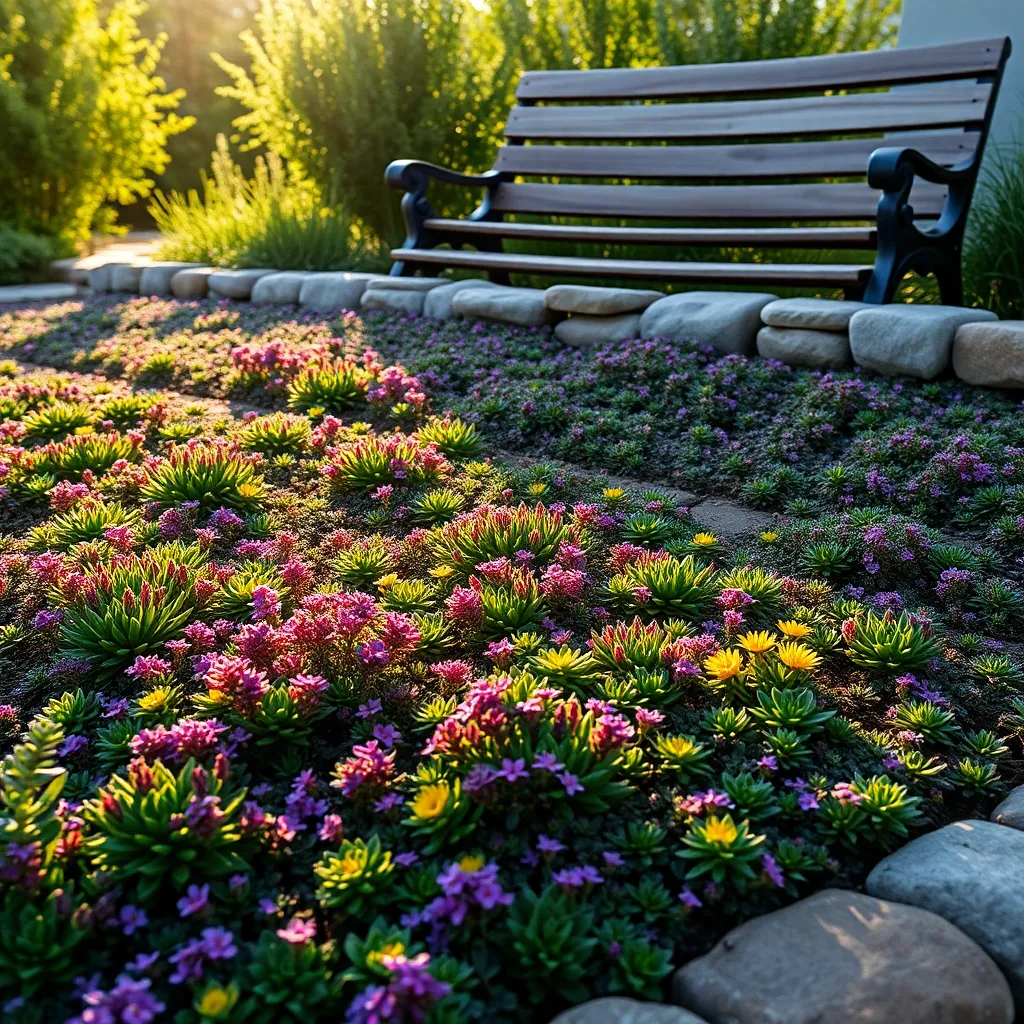
Consider using perennial groundcovers to reduce maintenance and enhance your landscape’s beauty. These plants offer a lush, green carpet that requires less watering once established, making them ideal for low-maintenance gardens.
Choose groundcovers like creeping thyme or sedum for their resilience and ability to thrive in various soil types. They are excellent for filling in gaps between stepping stones or blanketing large areas with minimal effort.
For shady areas, opt for plants such as sweet woodruff or hostas, which adapt well to lower light conditions. These options not only cover the ground but also suppress weeds, reducing the need for frequent weeding.
When planting perennial groundcovers, ensure you prepare the soil by removing weeds and adding organic matter to improve drainage. Space the plants according to their mature size to allow for natural spreading without overcrowding.
Water your groundcovers regularly during their first growing season to help them establish roots. Once settled, most perennials are drought-tolerant and need only occasional watering, which conserves water and saves time.
For a more advanced approach, mix different groundcovers to add texture and color variation to your landscape. This not only enhances visual appeal but also increases biodiversity, supporting beneficial insects and creating a healthier garden ecosystem.
Incorporate Mulch to Retain Moisture
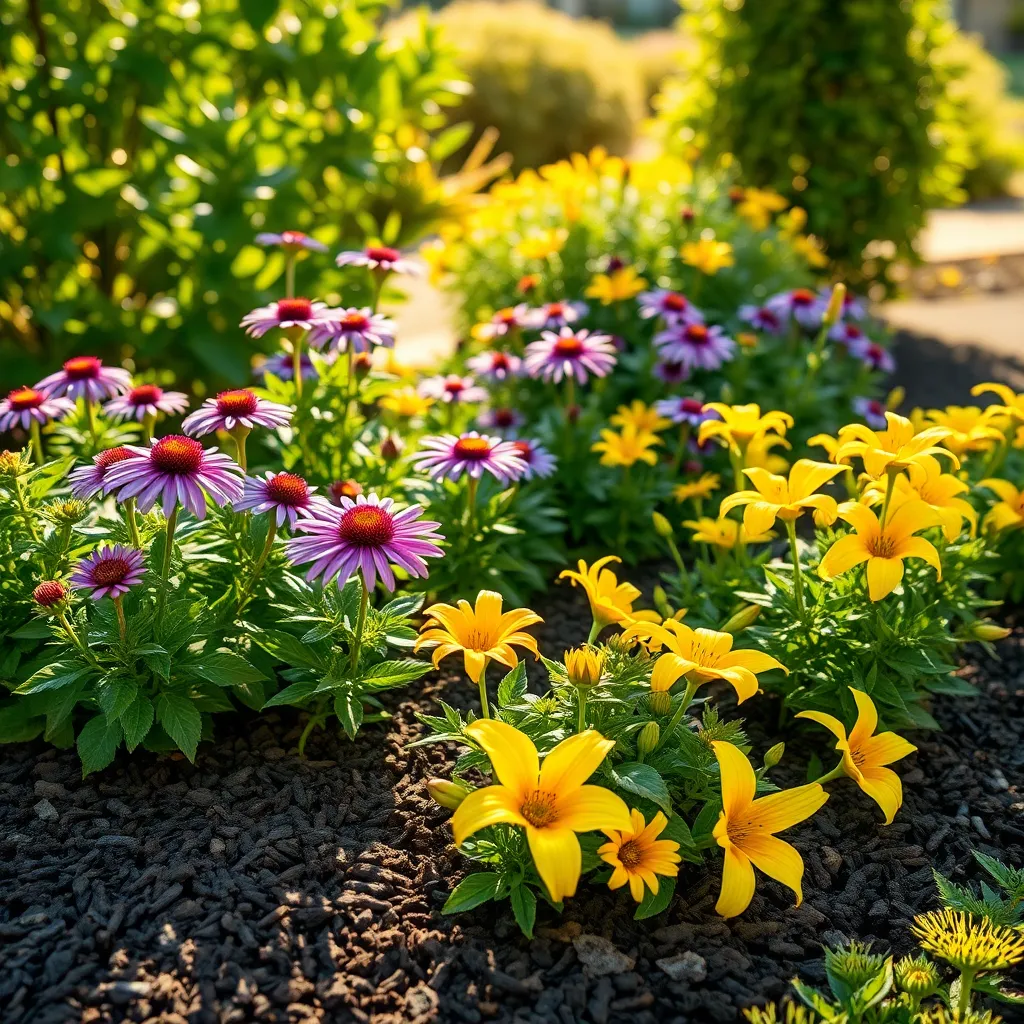
Mulch serves as a powerful tool in reducing garden maintenance by retaining soil moisture. By applying a layer of mulch, you can significantly decrease the need for frequent watering, making it an ideal choice for busy gardeners.
There are several types of mulch to consider, each with its benefits. Organic mulches, such as shredded bark, straw, or leaves, not only conserve moisture but also enrich the soil as they decompose.
To maximize the effectiveness of mulch, apply it in a layer about two to three inches thick. This depth is sufficient to prevent evaporation while still allowing water to penetrate during rainfall or irrigation.
While beginners might opt for easy-to-use bagged mulch from garden centers, more experienced gardeners can create their own. Composting yard waste to use as mulch is an eco-friendly and cost-effective method to maintain your garden’s health.
Use Native Plant Species
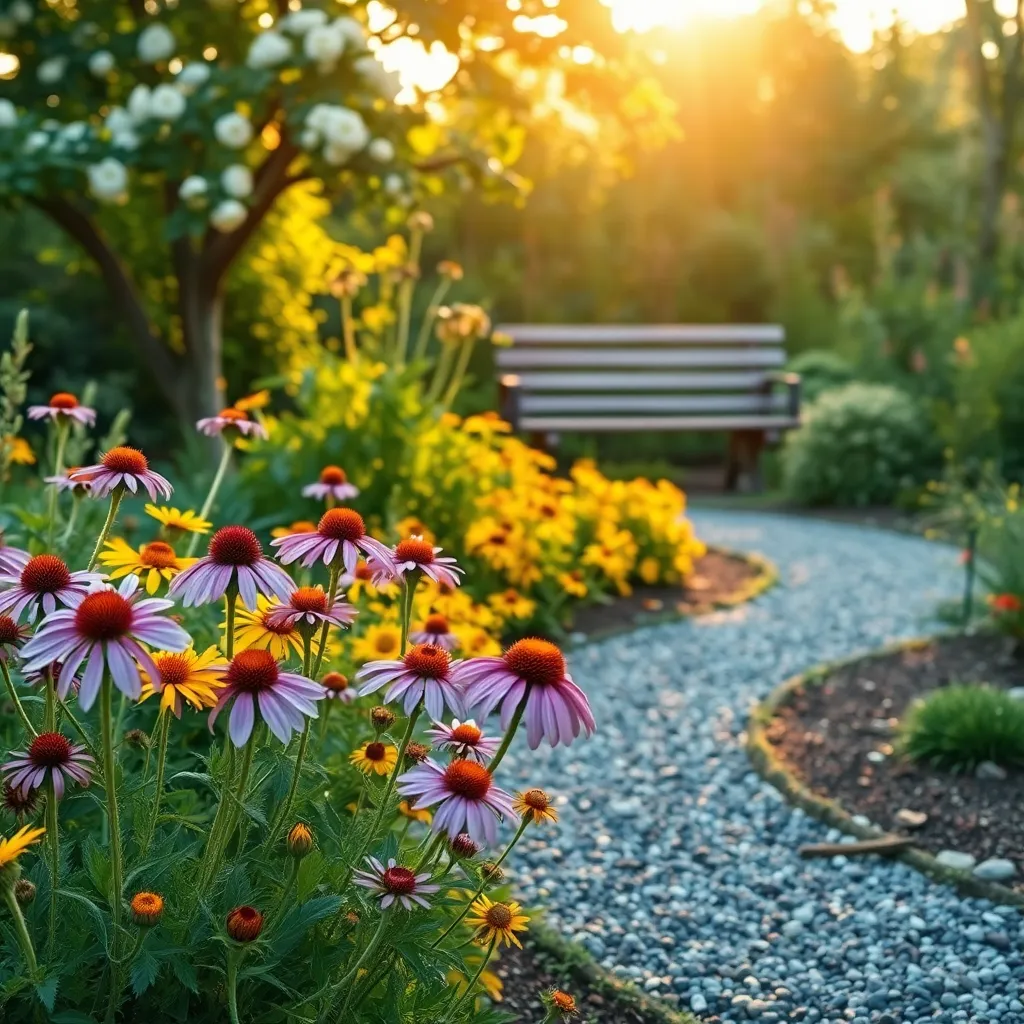
Opting for native plant species in your garden is a great way to create a low-maintenance landscape. These plants are naturally adapted to your local climate, meaning they require less water and care compared to non-native species.
Start by researching which native plants thrive in your region’s soil and climate conditions. Many native plants are drought-tolerant, reducing the need for frequent watering and saving you time and resources.
Consider incorporating a variety of native plants to create a diverse and resilient garden ecosystem. This not only enhances the visual appeal of your garden but also supports local wildlife, such as pollinators and beneficial insects.
For a beginner-friendly approach, choose native perennials like coneflowers or black-eyed Susans, which are known for their hardiness and ability to thrive with minimal care. Advanced gardeners might experiment with native grasses to add texture and movement to the garden landscape.
Conclusion: Growing Success with These Plants
As we wrap up our exploration of ‘Low Maintenance Landscaping Ideas,’ let’s recap the five key relationship concepts that can help nurture your connection with less effort. First, simplifying chores by sharing responsibilities can transform mundane tasks into moments of bonding. Secondly, embracing minimalism in your relationship allows you to focus on what truly matters, fostering a deeper connection. Third, regular communication acts like a natural fertilizer, encouraging growth and understanding. Fourth, setting boundaries is akin to creating pathways in your garden, guiding you both towards mutual respect and space. Lastly, nurturing individual growth ensures that each partner can thrive, much like giving plants the sunlight they need.
To put these insights into practice, choose one concept to focus on this week—perhaps initiating a heart-to-heart conversation or planning a shared activity. As you embark on this journey towards a flourishing partnership, consider saving or bookmarking this article for future reference. That way, you can revisit these ideas whenever your relationship needs a gentle nudge.
Remember, every step you take today plants seeds for a successful relationship tomorrow. With these low-maintenance strategies, you’re well-equipped to cultivate a love that stands the test of time. Keep nurturing, keep growing, and watch your relationship bloom.

